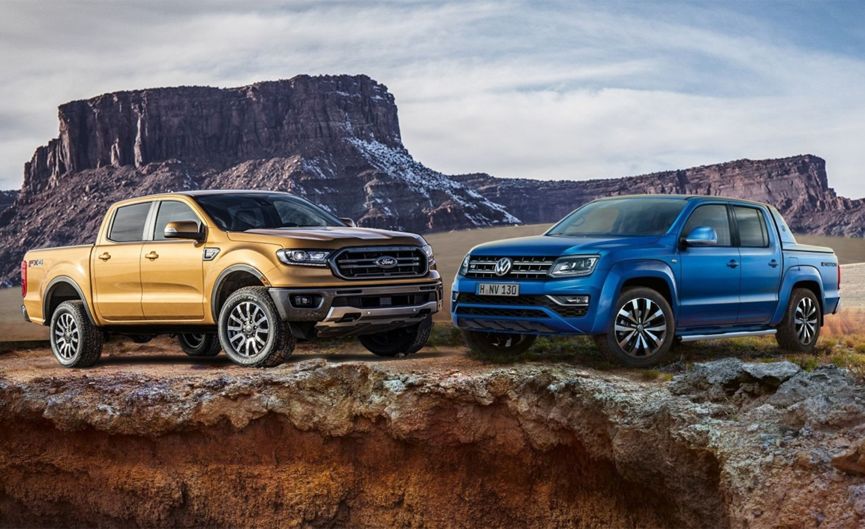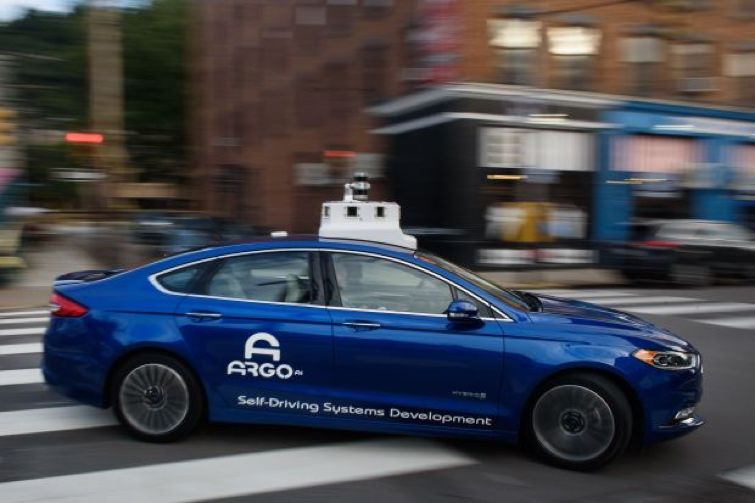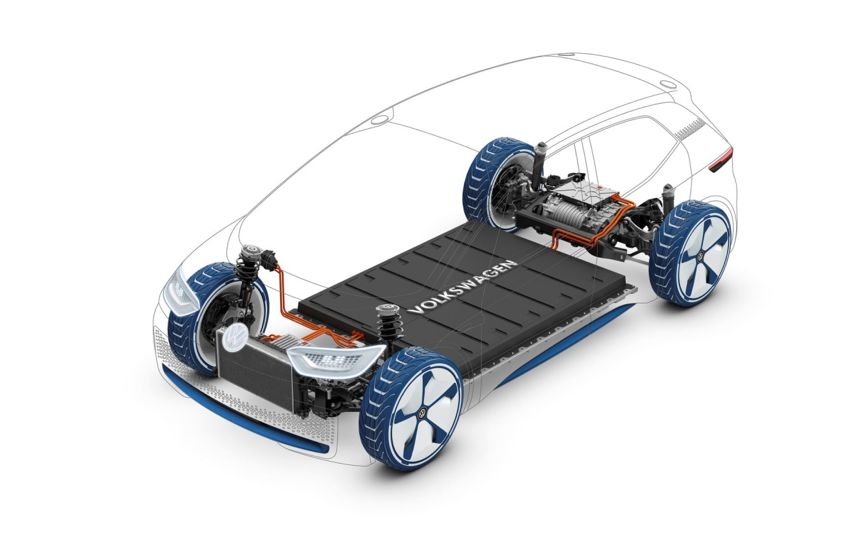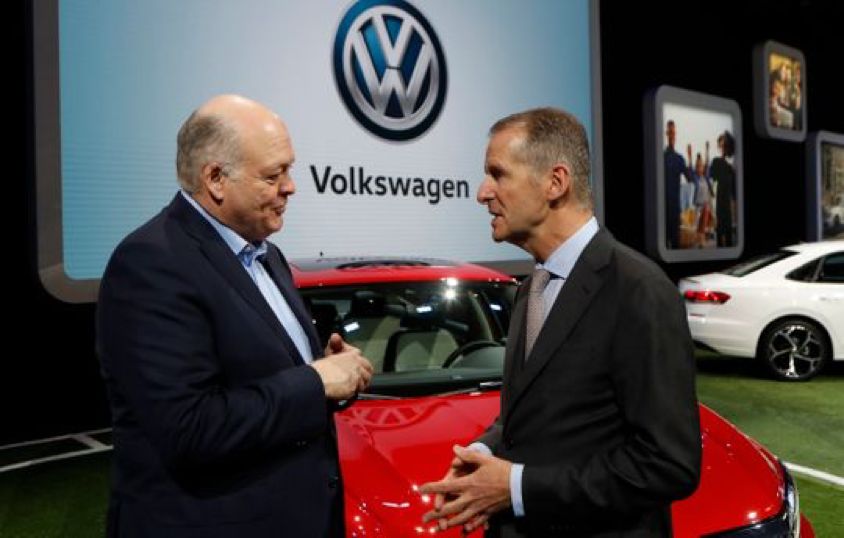On January 15, at the Detroit Auto Show, Volkswagen and Ford officially announced their alliance, forming the largest CP in the automotive industry. According to the agreement, the two sides will first cooperate on commercial vehicles and pickup truck models, and will jointly develop a pickup truck model to be launched globally as early as 2022. Starting in 2023, the two sides will significantly expand their business scale and improve operational efficiency. At the same time, Ford and Volkswagen also promise to explore potential cooperation opportunities in the field of electric vehicles, autonomous driving, and intelligent mobility services.
Why are the two auto giants teaming up now?
Rumors of the alliance between Ford and Volkswagen began in June 2018, and after six months, the general outline of their alliance plan has been exposed, so the official announcement at this time came as no surprise. However, why these two automotive giants are coming together at this time remains a topic of curiosity.
The first reason is perhaps the unprecedented crisis faced by Ford. Strong greenhouse effects in 2018 did not warm up Ford. Its total revenue was USD 109.5 billion, and its net income was USD 3.8 billion, down more than 27% from the same period last year. Moreover, the Chinese market, which once became Ford’s cash cow, also declined sharply, with Changan Ford selling a total of 308,600 vehicles in the first three quarters, a year-on-year drop of 46%, while Ford suffered overall losses in South America, Asia-Pacific, and European markets.
When the new CEO of Ford, Jim Hackett, took office in May 2018, he realized an unprecedented pressure. He announced that Ford would cut costs by USD 14 billion within five years, and later revised the figure to USD 25.5 billion. Therefore, in order to “cut off its damaged limbs and survive,” Hackett decided to cut off the car business in the North American market two years later, and even news that Ford wanted to give up the South American market.
In July 2018, Hackett announced that in order to reverse the trend of declining Company’s performance and respond more flexibly to competitive pressures, Ford would invest USD 11 billion over the next three to five years to completely restructure the Company to create a more efficient and less managed Company. In addition, Ford gave up the profit margin target set for 2020 for this grand restructuring plan (maybe knowing that it was difficult to achieve).
If this is Hackett’s “three fights when he came to the job,” this last fight is a real fire that burns directly to Ford’s employees. In October 2018, Ford announced to its employees its plan for a global-scale layoff of “restructuring personnel.” The plan will be completed in the second quarter of this year and may involve tens of thousands of staff worldwide. Although the specific figures have not yet been revealed, Ford has already laid off thousands of employees in Europe at the beginning of this year.Did you remember the mockery of many senior executives in various car companies towards Tesla and Elon Musk? Here is a quote from Elon mocking Ford: “Ford and Tesla barely made it through the last recession, but Ford is likely to fail in the next recession,” he said in an interview with Recode in November 2018.
On the other hand, in the difficult economic environment, Volkswagen sold 10.83 million vehicles in 2018, a year-on-year increase of 0.9%. It is quite an achievement, but the declining trend of the Chinese market, which is the sales pillar of Volkswagen, is obvious. According to the China Passenger Car Association, in 2018, sales of narrow passenger cars fell by 5.7% year-on-year. How long can Volkswagen’s growth last under this economic downturn? I am afraid it is not optimistic.
To ensure a smooth transition for the huge Volkswagen Group, CEO Herbert Diess must prepare in advance. Therefore, “saving money” has not only appeared in Ford, but also in Volkswagen. After a long-term tug-of-war with the trade unions, Diess eventually succeeded in cutting 30,000 jobs and requiring every subsidiary to save €10 billion per year by increasing factory and office efficiency by 30%.
In this era of economic downturn coinciding with major changes in the automotive industry, no one can be too relaxed.
Taking each other’s strengths and weaknesses to complement each other is the key to forming an alliance between Ford and Volkswagen. It can’t be emotionally driven in the era of interests. Why Ford? As mentioned earlier, in 2018, Volkswagen sold 10.83 million vehicles, but the market was extremely unevenly distributed. The Asia-Pacific market sold 4.54 million vehicles (including 4.21 million in China), and the European market sold 4.38 million vehicles. These two markets accounted for more than 80% of Volkswagen’s sales. However, North America sold only 956,000 vehicles and South America sold only 590,000 vehicles, which is not impressive. In order to ensure profits, Volkswagen must grasp the US market and then North America.
However, the United States is Volkswagen’s tragic ground because of the emission issue, which has caused billions of dollars in fines and still haunts Volkswagen to this day. In addition, Volkswagen’s products have always had difficulty achieving sales figures in the United States compared to local brands and Toyota. Volkswagen Group must have conducted countless analyses of the US market internally, but it has been struggling in the pickup truck segment that Americans love (the Amarok has not been launched in the US market), and thus missing out on this huge market.
At this point, it is not hard to think of Ford. The F family has strong strength and has long occupied the top spot in sales charts, making it the American car god. Therefore, for Volkswagen, if it wants to make up for its shortcomings and have a strong impact on the US market, Ford is almost the best choice.
Why Volkswagen? Simply put, to make money.
How did Ford survive this crisis and avoid being eliminated, to a large extent, depends on how much money it has in reserve. In markets where it is losing money around the world, how does Ford make profits? Ford’s answer is to bring out its strengths – commercial vehicles and pickups.
And the first thing mentioned in this announcement is commercial vehicles and pickups. In review, “launch a midsize pickup as early as 2022, followed by commercial vans in Europe, significantly expanding the partnership’s commercial vehicle business starting in 2023.“
With annual sales of over 10 million, commercial vehicles and pickups have become hotter than ever. Volkswagen, which wants to improve its performance in the US market, and Ford, which want to change the declining trend in the European market, are a perfect match.
In addition, the benign cooperation between Volkswagen and Ford in the joint venture in South America and sharing of platforms many years ago laid the foundation for the CP (collaboration partnership) between the two sides. As Diess said, “merging light commercial vehicle businesses and sharing platforms, will give us greater competitive advantage, and achieve appropriate economic scale.”
Can the strongest CP join hands for transformation?
Although yesterday’s announcement only implicitly mentioned “commitment to explore potential cooperation opportunities in the areas of electric vehicles, autonomous driving, and intelligent mobility services.” I believe that Ford and Volkswagen’s alliance will surely put joint transformation on the agenda.
If Ford and Volkswagen had their own requirements for commercial vehicles and pickups, then in terms of transformation and development, Ford and Volkswagen can be described as “brothers in arms”.
Faced with a dilemma, Ford tried every means to reduce expenses, but went all-out in the field of autonomous driving. In 2017, Ford acquired a startup Argo.ai at an amazing price of $1 billion, and after that, Ford invested billions of dollars in autonomous driving. In December 2018, the autonomous driving delivery trucks, cooperated by Ford and Walmart, began trial operation. In Miami, there are nearly 100 Ford self-driving taxis in pilot operation. Ford continues to develop fully autonomous vehicles without steering wheels or pedals, which are expected to be used for commercial services in 2021.
It is somewhat unusual for Ford, which is trying to cut costs through layoffs, to make such a big investment. However, compared to Volkswagen, this investment is only a drop in the bucket.
 To transform, Diess secured 44 billion euros at last year’s supervisory board meeting for investment in electrification, autonomous driving, mobility services, and digitalization. Diess aims to convert the three German factories into electric vehicle plants while constructing another one in Europe in 2022. By 2021, the company plans to have produced its electric vehicles in six Chinese factories.
To transform, Diess secured 44 billion euros at last year’s supervisory board meeting for investment in electrification, autonomous driving, mobility services, and digitalization. Diess aims to convert the three German factories into electric vehicle plants while constructing another one in Europe in 2022. By 2021, the company plans to have produced its electric vehicles in six Chinese factories.
Meanwhile, Volkswagen is also considering a joint venture with SK Innovation to build a battery factory in Europe. According to Volkswagen’s battery procurement plan, battery purchasing is set to reach 50 billion euros by 2025. Diess stated that 40 billion euros of orders have already been confirmed. In addition, Volkswagen plans to launch 30 new energy vehicle models by 2020.
It seems that Ford is fully committed to autonomous driving, while Volkswagen focuses on electric cars. However, facing Industry 4.0, no traditional giants appear willing to give up any aspect of this new wave of innovation.
Ford once promised to offer a comprehensive electrification solution in China by 2025. However, perhaps because this timeline is too far away, there are no pure electric vehicles from Ford at present. Its “old enemy” in the American market, General Motors, has Bolt, and Nissan already has Leaf.
Volkswagen is also making a great effort in autonomous driving. In early 2018, Volkswagen began to cooperate with Aurora. In November of the same year, Diess reportedly wanted to invest $13.7 billion to acquire 10% of Waymo but was blocked by the supervisory board. At the same time, there were also rumors that Volkswagen was negotiating with Apple’s autonomous driving project, Project Titan. Oh, almost forgot, there is also Audi’s autonomous driving team. It seems that Volkswagen is casting a wide net, but it also seems to reflect the company’s lack of confidence in autonomous driving.
Let’s see how the senior executives of both companies respond. Volkswagen’s CFO Frank Witter openly expressed the company’s open attitude towards collaborating with other automakers, especially in the field of autonomous driving, during the release of the Q3 report in October of last year. Regarding the sharing of the MEB platform, Witter said, “Volkswagen is willing to share the MEB electric vehicle architecture with U.S. automakers.”
Diess said, “There is a lot of hype surrounding autonomous cars, with significant amounts of investment pouring into this field. But I think there is still a long way to go before we get any initial feedback. There is an alternative, which is to work with Ford to develop autonomous driving. However, no decision has been made yet. The road ahead is long, with potentially millions of dollars in investment and may encounter setbacks.”Han Keite said yesterday: “As time goes by, this alliance will help both companies create higher value and better meet the actual needs of our consumers and society. This alliance will not only significantly improve efficiency and strengthen business operations, but also provide us with opportunities to work together to change the era of intelligent mobile travel in the future.”
It seems that both Volkswagen and Ford have expressed the possibility of mutual cooperation in the field of the new four modernizations.
There are rumors that Volkswagen will hold shares in Ford’s autonomous driving company or the two sides will jointly establish a new company to engage in autonomous driving development. As for electric vehicles, I have no doubt that Volkswagen will give the MEB platform to Ford. Diess once said that he would produce a vehicle in 2020 that is equivalent to the level of Tesla but costs only half the price. However, it appears that the Model 3 has already become very popular, and Diess’ assertion is just rhetoric. The most difficult task is perhaps not how to achieve the same level as Tesla, but how to achieve it at half the price.
Speaking of costs, Volkswagen’s killer strategy – platformization – has re-emerged. The MEB platform is compatible with circular, soft pack, and square battery cells, compatible with MPVs, SUVs, sedans, and of course, many of Volkswagen’s other brands. For Volkswagen, the more widely the MEB is applied, the closer the target is. Therefore, allowing Ford to use the MEB is good for Volkswagen and even better for Ford.
Cooperation in the commercial vehicle and pickup truck sectors is about saving and making money, and the money saved and earned must be invested in corporate transformation. Therefore, the current cooperation is to consolidate the economic foundation of both parties, and the upcoming cooperation in electrification and autonomous driving is the real superstructure.
In the era of industry change, complex economic situations abound, and giant CPs like Volkswagen and Ford may become more and more frequent, and banding together to keep warm may become the norm of this era.
For the automotive industry, the day of the fight between the titans is coming.



This article is a translation by ChatGPT of a Chinese report from 42HOW. If you have any questions about it, please email bd@42how.com.

 *
*